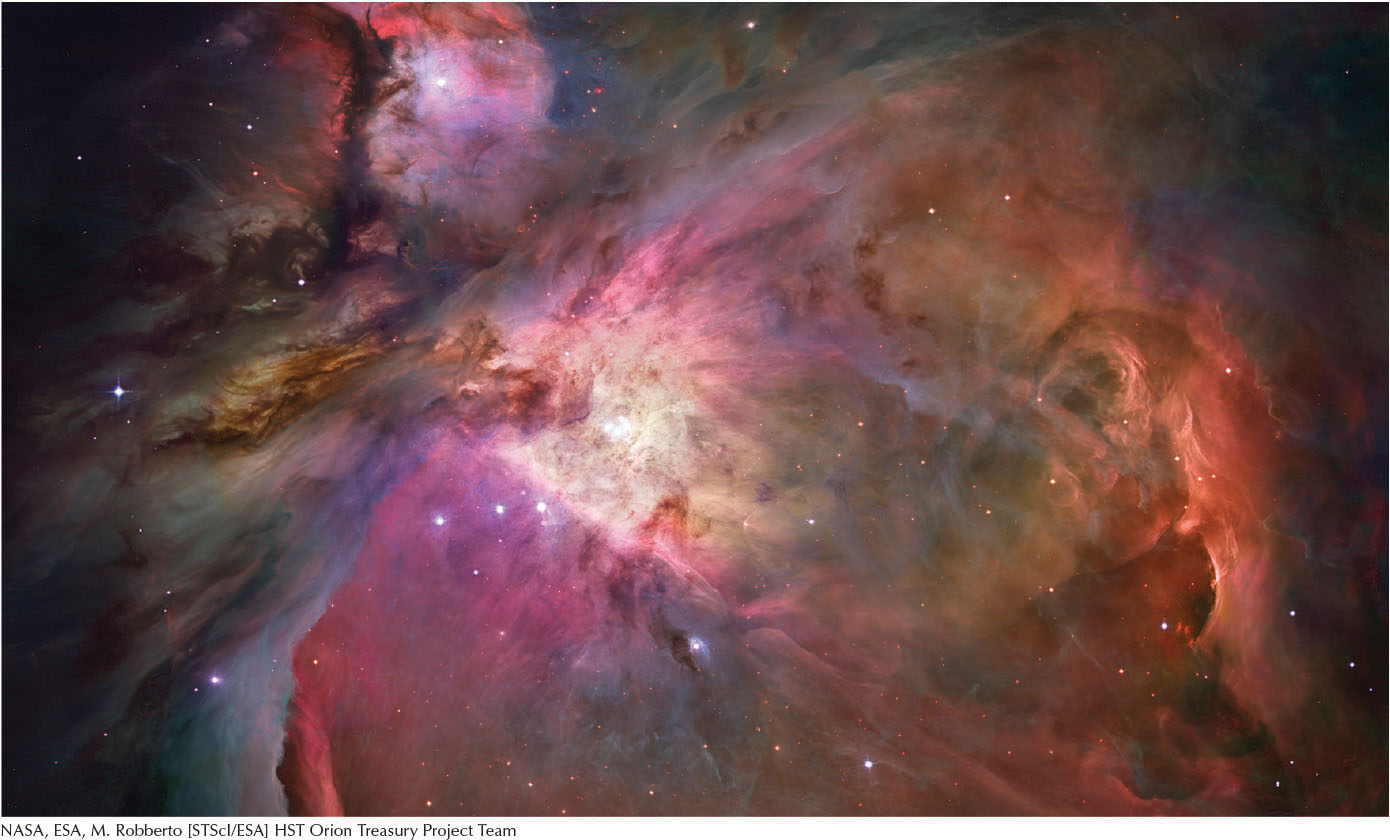131
CHAPTER [strong]5[/strong]

Formation of the Solar System and Other Planetary Systems
WHAT DO YOU THINK?
 How many stars are there in the solar system?
How many stars are there in the solar system?
 Were the Sun and planets among the first generation of objects created in the universe?
Were the Sun and planets among the first generation of objects created in the universe?
 How long has Earth existed, and how do we know this?
How long has Earth existed, and how do we know this?
 What typical shape(s) do moons have, and why?
What typical shape(s) do moons have, and why?
 Have any Earthlike planets been discovered orbiting Sunlike stars?
Have any Earthlike planets been discovered orbiting Sunlike stars?
Answers to these questions appear in the text beside the corresponding numbers in the margins and at the end of the chapter.
132
The Sun and all bodies that orbit it—planets, moons, and various kinds of debris (called asteroids, comets, and meteoroids)—make up the  solar system, the formation of which would make quite a dramatic movie. The story began quietly, with lots of small encounters between vast numbers of bit players (tiny gas and dust particles). Most of them quickly plunged into the center of the theater and together they formed the Sun, the star of the show. Plot lines developed as the remaining matter interacted. Things started to heat up as matter came together in progressively more violent collisions and near misses. Particles clumped into pebbles, rocks, and mountain-sized pieces of rubble. Sometimes big chunks of debris smashed each other to bits. Eventually, the heavyweights (in this case, bodies destined to become planets and large moons) managed to wipe out most of the smaller players. The drama also led to the evolution of life, a subplot featuring the third rock from the Sun.
solar system, the formation of which would make quite a dramatic movie. The story began quietly, with lots of small encounters between vast numbers of bit players (tiny gas and dust particles). Most of them quickly plunged into the center of the theater and together they formed the Sun, the star of the show. Plot lines developed as the remaining matter interacted. Things started to heat up as matter came together in progressively more violent collisions and near misses. Particles clumped into pebbles, rocks, and mountain-sized pieces of rubble. Sometimes big chunks of debris smashed each other to bits. Eventually, the heavyweights (in this case, bodies destined to become planets and large moons) managed to wipe out most of the smaller players. The drama also led to the evolution of life, a subplot featuring the third rock from the Sun.
Yes, The Making of the Solar System would be a great film—except that it would be in “slo-mo.” Just to get to the part where the planets are well established in their roles, you would have to watch solar system formation for about a hundred million years. In addition, because astronomers and geologists are continually making new discoveries about our solar system, the script would have to be continually revised and scenes reshot.
In fact, several times over the years, astronomers have decided that some bodies thought to be major actors really just play minor roles after all. Perhaps the most interesting way to view such a movie would be to compare it to films that show the formation of planetary systems around other stars, an area of intense research today.
In this chapter you will discover
 how the solar system formed
how the solar system formed
 why the environment of the early solar system was much more violent than it is today
why the environment of the early solar system was much more violent than it is today
 how astronomers define the various types of objects in the solar system
how astronomers define the various types of objects in the solar system
 the relationships between planets, dwarf planets, small solar system bodies, and other classifications of objects in the solar system
the relationships between planets, dwarf planets, small solar system bodies, and other classifications of objects in the solar system
 how and why the planets are grouped as they are
how and why the planets are grouped as they are
 how the moons formed throughout the solar system
how the moons formed throughout the solar system
 the composition of the debris scattered throughout the solar system
the composition of the debris scattered throughout the solar system
 that newly forming stars and planetary systems are being discovered every year
that newly forming stars and planetary systems are being discovered every year
 that disks of gas and dust, as well as planets, are being observed around a growing number of stars
that disks of gas and dust, as well as planets, are being observed around a growing number of stars